1000 cups of dried fruit. 600 eggs. 22kg of butter. 43kg of flour. That’s what it’s taken to make the 100 fruit cakes my Nana Betty has baked over the years. That’s 1 cake for the 59 Christmases she was married, and various birthdays and weddings. (Nana was known for her fruit cake so she was often asked to make the wedding cake for people in the community. She made the top layer of our cake.) I can’t even imagine what that would all cost in todays economy – it’d be about $350 for the eggs alone. Obviously this cake has stood the test of time – it’s rich and moist, and jam packed full of fruit. You can leave it nekkid or dress it up in some fondant. And there are only 7 weeks til Christmas! Have you thought about a Christmas cake yet?
A Christmas cake is not something you decide to whip up on a whim. It takes a couple of days of prep and as it’s Christmas cake, you want to put some love into it. And it’s not like you’re going to have 10 cups of dried fruit lying around.
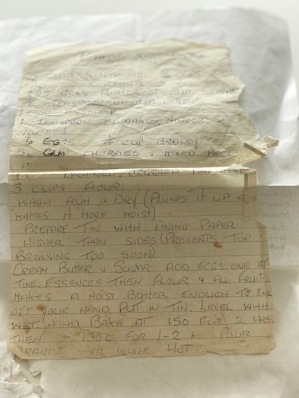
Before you start
There are a couple of things we need to do in advance – washing the fruit and preparing the cake tin.
 The day before baking, line your largest roasting tin or tray with baking paper and set aside. Tip the sultanas, raisins and currants into a colander and give them a good thorough rinse with cold water. This plumps up the fruit and makes it moister. Make sure the fruit is drained well, then transfer it to the roasting dish and spread it out evenly. Cover and leave overnight, occasionally moving the fruit around.
The day before baking, line your largest roasting tin or tray with baking paper and set aside. Tip the sultanas, raisins and currants into a colander and give them a good thorough rinse with cold water. This plumps up the fruit and makes it moister. Make sure the fruit is drained well, then transfer it to the roasting dish and spread it out evenly. Cover and leave overnight, occasionally moving the fruit around.
You will need a 8″ square deep cake tin which needs to be lined a specific way to prevent the sides and top from browning too quickly. Each side and the base of the tin needs to be lined with two layers of newspaper and 1 layer of baking paper. These should rise 2″ above the top of the tin. This is a fiddly but necessary step. 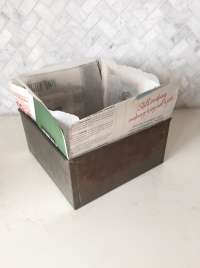
Now we’re ready to start baking.
Ingredients
5c sultanas
3c raisins
2c currants
50g glace cherries, finely chopped
50g mixed peel
225g butter, cubed and at room temperature
1c sugar
½ teaspoon vanilla extract
½ teaspoon almond essence
½ teaspoon lemon essence
1 teaspoon cinnamon
1 teaspoon nutmeg
1 teaspoon ginger
1 teaspoon mixed spice
6 eggs (I used size 7)
3c flour
1c crushed pineapple, drained
¼c brandy
Method
Preheat your oven to 150°C and have your triple lined tin at the ready.
In the bowl of a stand mixer fitted with the paddle attachment, cream the butter and sugar together until light and fluffy, scraping down the side of the bowl when necessary. This will take several minutes.
Add the eggs one at a time, mixing well in between each one. The batter will curdle – add ½ cup of the flour to bring it back together.
Add the vanilla, almond and lemon essences, keep mixing.
With the mixer on low, add the flour bit by bit, then add the spices, and then all of the fruit, including the cherries and peel.
The batter should be moist enough that it falls off your hand.
Spoon it into the prepared tin and level it with a wet hand.
Bake for two hours at 150°C, then lower the heat to 130°C for another 1-2 hours, so when you test it with a skewer, the skewer comes out clean. (My cake took exactly 3 hours in total.)
Remove from the oven and poke holes all over the top with a skewer. Drizzle with the brandy.
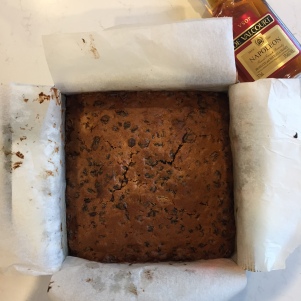
Cool completely in the tin.
Decorating
You can either leave your cake naked, or you can cover it in fondant. Traditionally, a Christmas cake is covered in an almond paste, followed by white fondant. Nowadays, there is an almond flavoured fondant available, and that’s what I use.
Ingredients
1kg almond fondant (see notes)
1kg white fondant
2 teaspoons apricot jam
icing sugar, for dusting
Method
I hardly ever use fondant so I haven’t had a lot of practice with it. The way I do it might not be technically correct but it’s pretty quick and easy so it works for me!
Start with the cake on the board that you plan to store it on, it’s hard to move the cake later without ruining the fondant. You also might need to slice off the top so it’s flat, then flip it over so the bottom becomes the top (and it’s nice and flat.)
Place the jam in a small bowl and add just enough boiling water to thin it to a syrupy consistency. Using a pastry brush, gently brush the syrup all over the cake. This will help the first layer of fondant stick to the cake. Carefully wipe away any loose crumbs. (I didn’t have apricot jam so I used raspberry.)

On a clean surface dusted with icing sugar, knead the almond fondant until it is soft and pliable. Roll it out until it’s ¼” thick, keep dusting the bench with icing sugar and moving the fondant around so it doesn’t stick to the bench.
Once you have the correct size, gently drape the fondant over the cake and smooth it. If you’ve worked with fondant before, you might have those nifty smoothers. I use these ones. Once everything is looking lovely and smooth, carefully trim the excess off with a sharp knife.
Now repeat the last 2 steps with the white fondant.
Once you have covered your cake you can decorate it if you like. I like to keep it simple with a couple of strips of ribbon.
Wrap the cake in baking paper and store it in a cool, dark place in an airtight tin. If you don’t ice yours, wrap it in baking paper, then Gladwrap and store it in an airtight tin.
Notes
- This might seem like a lot of fondant and you won’t use it all, but you need to get a thick layer that’s big enough to cover the cake.

© Once Upon An Egg. All images and content are copyright protected. Please don’t use my images without permission. If you want to republish this recipe, please re-write it in your own words, or link back to this post for the recipe.






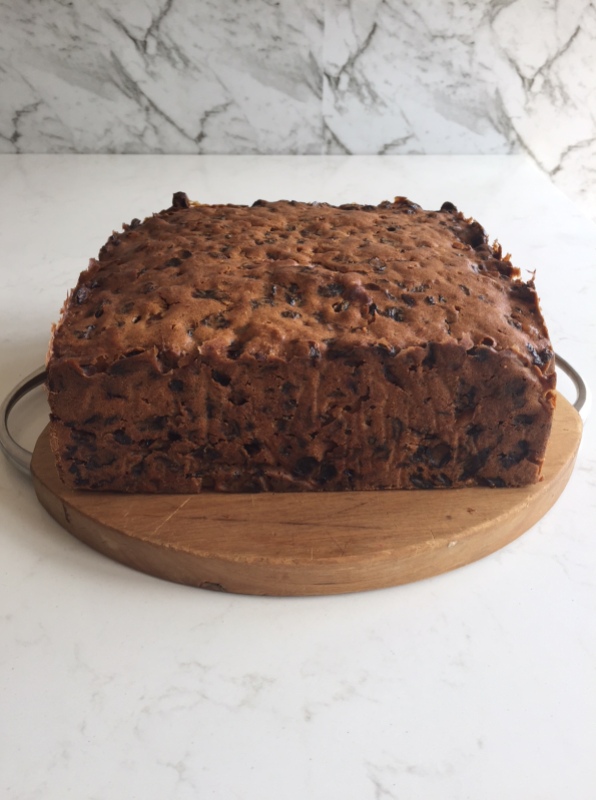




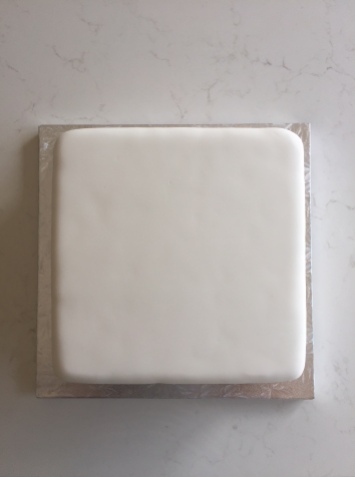

This makes me want to make a Christmas cake again! I love the pic of the original recipe – that handwriting!
LikeLike
Thanks Meg x I’m making a smaller one for Nana
LikeLike
What an inspiring recipe, thanks for posting and the idea, I bet my family’s going to love it!
LikeLike
Thanks so much for your kind words
LikeLiked by 1 person
different to how I make my cake, but a fantastic tradition.
LikeLike